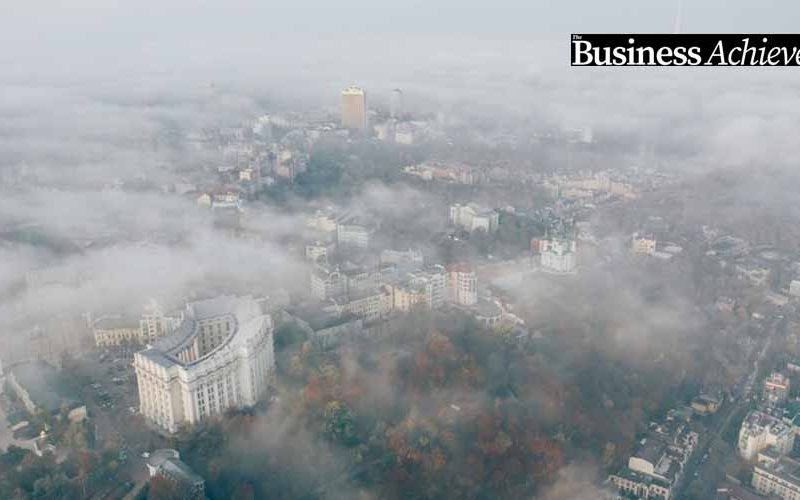This staggering revelation reflects the growing severity of air pollution in India
India has cemented its position as the country with the highest number of polluted cities globally. A recent report by S&P Global Mobility highlighted that 39 Indian cities rank among the top 100 most polluted cities in the world, surpassing China, which came in second with 30 cities. This staggering revelation reflects the growing severity of air pollution in India and its implications for public health and quality of life.
India’s Alarming Pollution Crisis
As residents in Indian cities face worsening air quality, the capital city, Delhi, has become synonymous with pollution. The Air Quality Index (AQI) in Delhi often exceeds 500, far surpassing the hazardous threshold. This has led to widespread health issues, including respiratory illnesses, cardiovascular problems, and decreased life expectancy.
The pollution in Delhi is a mix of several factors, including:
- Vehicular emissions
- Industrial pollutants
- Construction dust
- Crop stubble burning in neighboring states like Punjab and Haryana
Despite numerous policies aimed at curbing pollution, the crisis continues to worsen each year, particularly during winter.
Indian Subcontinent Dominates the Pollution List
India, along with its neighbors in the subcontinent, dominates the list of the world’s most polluted cities:
- India: 39 cities
- China: 30 cities
- Pakistan: 7 cities
- Bangladesh: 5 cities
- Nepal: 2 cities
The subcontinent collectively accounts for 53 cities in the top 100, making it the most pollution-affected region globally. This alarming statistic underscores the shared environmental challenges faced by these countries, including rapid urbanization, industrialization, and unchecked population growth.
The Impact of Urbanization on Pollution
India’s rapid urbanization has played a significant role in the worsening pollution crisis. Cities like Mumbai, Delhi, and Bengaluru are grappling with severe traffic congestion, industrial emissions, and unplanned development, all contributing to the degradation of air quality.
Traffic Congestion and Emissions
S&P Global Mobility’s data paints a grim picture of traffic congestion in Indian cities:
- Mumbai: 430 vehicles per kilometer (km)
- Kolkata: 308 vehicles per km
- Pune: 248 vehicles per km
- Delhi: 93 vehicles per km
In cities like Bengaluru, severe congestion has reduced average vehicle speeds to just 10 km/hour. This has led to a spike in vehicular emissions, one of the leading contributors to urban air pollution. The situation calls for urgent action to reduce traffic congestion and shift to cleaner, sustainable transportation solutions.
Industrial Pollution
Industries remain a major source of air pollution in India. Unregulated emissions from factories, power plants, and construction sites contribute heavily to particulate matter (PM2.5 and PM10) levels in the air. Industrial belts around cities like Delhi, Ghaziabad, and Ludhiana exacerbate the problem.
Stubble Burning
Crop stubble burning in neighboring states like Punjab and Haryana is a recurring issue every winter. Farmers burn agricultural residues to prepare fields for the next planting season, releasing large amounts of particulate matter and greenhouse gases into the atmosphere. This practice has been a significant factor in Delhi’s annual winter pollution crisis.
The Cost of Pollution
Air pollution has devastating effects on human health, the environment, and the economy. According to studies:
- Health Impacts: Prolonged exposure to air pollution leads to respiratory diseases, cardiovascular problems, and premature deaths. Vulnerable groups, including children and the elderly, are at higher risk.
- Economic Costs: Air pollution causes billions of dollars in productivity losses each year due to health-related absenteeism and medical expenses.
- Environmental Damage: Pollution harms ecosystems, reduces agricultural productivity, and accelerates climate change.
Comparing India and China
China, which was once infamous for its severe air pollution, has made significant strides in reducing pollution levels. While 30 Chinese cities still feature in the list of the top 100 most polluted globally, the country’s ranking has improved considerably compared to previous years.
Key Takeaways from China’s Progress
- Strict Regulations: China has implemented stringent regulations on industrial emissions and coal usage.
- Vehicle Electrification: The country has rapidly adopted electric vehicles, reducing vehicular emissions.
- Urban Planning: Large-scale efforts have been made to green urban spaces and control construction dust.
In contrast, India’s lack of cohesive and enforceable policies has hindered its ability to address pollution effectively. While there have been initiatives like the National Clean Air Programme (NCAP), progress has been slow.
Delhi: The World’s Most Polluted Capital
In 2023, a report by IQAir, a global air quality monitoring agency, ranked Delhi as the most polluted capital city in the world. The average PM2.5 concentration in Delhi was alarmingly high, making it hazardous for residents to breathe. In comparison, Beijing, once notorious for pollution, was ranked 18th.
This stark contrast highlights India’s struggle to manage pollution compared to China’s relative success in mitigating the crisis.
Steps Taken by India
India has initiated several measures to combat air pollution, including:
- Bharat Stage (BS) Emission Norms: Stringent vehicle emission standards have been introduced to reduce pollution from automobiles.
- Odd-Even Scheme: Delhi implemented this traffic rationing scheme to reduce vehicular congestion during peak pollution periods.
- Promotion of Electric Vehicles (EVs): The government is encouraging the adoption of EVs through subsidies and incentives.
- Smog Towers: Delhi has installed smog towers to filter pollutants from the air, though their effectiveness remains debatable.
- National Clean Air Programme (NCAP): This program aims to reduce PM2.5 and PM10 levels by 20-30% by 2024.
Despite these efforts, the implementation and enforcement of policies remain a challenge. Political blame games between state and central governments have further stalled progress.
The Role of Vehicle Electrification
The S&P Global Mobility report emphasized the urgent need for India to transition to electric vehicles (EVs). With cities like Mumbai, Bengaluru, and Delhi facing severe traffic-related pollution, electrification offers a promising solution.
Key benefits of vehicle electrification include:
- Reduced Emissions: EVs produce zero tailpipe emissions, significantly improving air quality.
- Lower Costs: Over time, EVs can be more cost-effective than internal combustion engine vehicles.
- Energy Security: Transitioning to EVs reduces dependence on imported fossil fuels.
However, challenges like inadequate charging infrastructure and high upfront costs must be addressed for large-scale EV adoption.
Future Outlook
India’s air pollution crisis is a public health emergency that demands immediate and sustained action. Key areas for improvement include:
- Policy Implementation: Strengthening the enforcement of existing environmental regulations.
- Public Awareness: Educating citizens about the health impacts of air pollution and ways to reduce their carbon footprint.
- Regional Cooperation: Collaborating with neighboring countries like Pakistan and Bangladesh to tackle cross-border pollution.
- Technological Innovations: Investing in clean energy, advanced air filtration systems, and green urban planning.
India’s ranking as the country with the most polluted cities globally is a wake-up call for policymakers, industries, and citizens. With 39 cities in the top 100 most polluted list, India faces a daunting challenge that threatens public health and economic growth.
While steps like vehicle electrification and clean air programs have been introduced, much more needs to be done. Collaborative efforts, stringent enforcement, and innovative solutions are essential to reversing the trend and ensuring a healthier future for all. The time to act is now.



